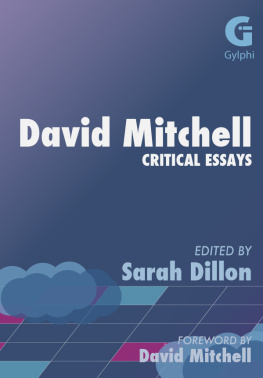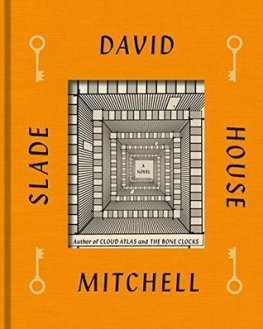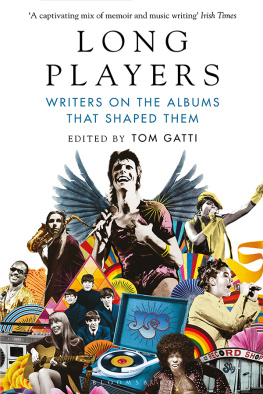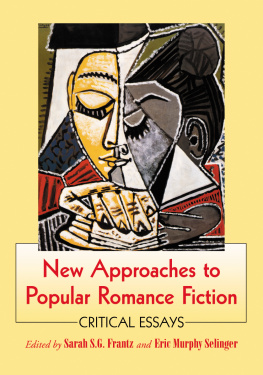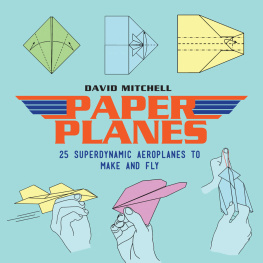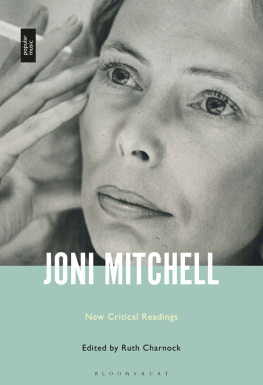Sarah Dillon - David Mitchell: Critical Essays
Here you can read online Sarah Dillon - David Mitchell: Critical Essays full text of the book (entire story) in english for free. Download pdf and epub, get meaning, cover and reviews about this ebook. year: 2011, publisher: Gylphi Limited, genre: Romance novel. Description of the work, (preface) as well as reviews are available. Best literature library LitArk.com created for fans of good reading and offers a wide selection of genres:
Romance novel
Science fiction
Adventure
Detective
Science
History
Home and family
Prose
Art
Politics
Computer
Non-fiction
Religion
Business
Children
Humor
Choose a favorite category and find really read worthwhile books. Enjoy immersion in the world of imagination, feel the emotions of the characters or learn something new for yourself, make an fascinating discovery.
- Book:David Mitchell: Critical Essays
- Author:
- Publisher:Gylphi Limited
- Genre:
- Year:2011
- Rating:4 / 5
- Favourites:Add to favourites
- Your mark:
- 80
- 1
- 2
- 3
- 4
- 5
David Mitchell: Critical Essays: summary, description and annotation
We offer to read an annotation, description, summary or preface (depends on what the author of the book "David Mitchell: Critical Essays" wrote himself). If you haven't found the necessary information about the book — write in the comments, we will try to find it.
David Mitchell: Critical Essays — read online for free the complete book (whole text) full work
Below is the text of the book, divided by pages. System saving the place of the last page read, allows you to conveniently read the book "David Mitchell: Critical Essays" online for free, without having to search again every time where you left off. Put a bookmark, and you can go to the page where you finished reading at any time.
Font size:
Interval:
Bookmark:
Abbreviations of works cited by David Mitchell:
G Mitchell, David (1999) Ghostwritten. London: Sceptre.
n9d Mitchell, David (2001) number9dream. London: Sceptre.
CA Mitchell, David (2004) Cloud Atlas. London: Sceptre.
BSG Mitchell, David (2006) Black Swan Green. London: Sceptre.
TA Mitchell, David (2010) The Thousand Autumns of Jacob de Zoet. London: Sceptre.
I would like to thank Anthony Levings at Gylphi and the School of English, University of St Andrews, for their support in running the David Mitchell Conference. I would also like to thank all the paper-givers and attendees at the conference for making the event such a success papers delivered there but not included here, as well as the discussion they prompted, have informed this collection. Finally, I would like to thank David Mitchell for attending the event, giving his support to this collection and creating the fictional world in which we all take such delight.
Three of David Mitchells novels to date were conceived in nine parts, and yet none is actually so. His first book Ghostwritten (1999) is described as a novel in nine parts but has a named coda and thus lists ten parts. His second novel number9dream (2001) is divided into eight sections, with a blank ninth. Echoing Mitchells toying with the number nine, this essay takes a related structural form.
In a Time review of Black Swan Green, Pico Iyer (2006) describes Ghostwritten as a planetary novel. Later, in a profile of Mitchell for Times list of the top 100 people who are transforming the world Mitchell is ranked at number 16 Iyer (2007) argues that with Ghostwritten Mitchell created the 21st century novel. We would like to review what these claims might mean. To begin with, they contrast with the verdict of Richard Bradford in The Novel Now (2007). In his survey of the British novel, Bradford includes Mitchell along with a selection of writers that he names the new postmodernists; writers who are united by a range of techniques, devices and effects manifested in their work. Bradford seems to suggest that in the production and consumption of fiction in the current aesthetic supermarket, as David Lodge (1996: 11) labels it, Mitchell marries experimentation with consumer friendliness, dense textuality with rich storytelling. We would argue that this misconceives, or at the very least underestimates, Mitchells fiction. Mitchells novels do not merely rehearse the stylistic inflections of a domesticated postmodernism, as Bradford terms it, but rather articulate a complex response to the current material conditions of the world (Bradford, 2007: 628). Postmodernism emerged against a backdrop of Cold War relations that in many ways wound down in 1989. Perceptions of the world have been transformed dramatically in the twenty years since then, such that the discourses of postmodernism and postcolonialism arguably offer rather limited perspectives on present circumstances. While postmodernism and postcolonialism challenge forms of power that impose relatively stable hierarchical structures, they seem increasingly unsatisfactory to describe the flows of mediated identity, the global reach of capital, the possibilities of new political paradigms, and the modulating networks of the world market. This is a contemporary reality that is, however, addressed in Mitchells first three novels. As globalization forges new patterns of human interaction, interconnectedness and awareness, the nested layers of stories within stories in these novels, and their mixing of different modes of reality, articulate the fluidity and multiplicity of contemporary relations and subjectivities.
For example, the subtitle of Ghostwritten presents the book as a Novel in Nine Parts, its formal arrangement comprising nine discrete first-person narratives that trace an imaginative passage from East to West, encircling the globes northern hemisphere. Though the narrative does come to pass through the more familiar centres of the global cultural economy such as London and New York, much of the novel concentrates on places that have been perceived as alien and mysterious by the western cultural imagination: Japan, Hong Kong, China and Mongolia have all found themselves refracted through a prism of Eurocentric discourse that has world history radiating outwards from its over-developed centres. but rather seems to be an alternative recognition of planetary con-temporality and dynamic synchronicity where people and places are inextricably linked regardless of distance. The novel does not just show events happening around the world at the same time for purposes of comparison, it animates an entire circuitry of global interaction and interdependence.
Against readings of globalization that frame it as a process of integration and assimilation homogenizing cultural difference, all of Mitchells first three novels suggest that the site of the local is crisscrossed by innumerable paths of movement with varying speeds and directions. Encounters on these planetary trajectories are better seen as confluences in webs of relations. These entangle, however minimally, the wider world, where most people faced with the rhetoric of a war on terror may have asked the opening question of Mitchells first novel: Who was blowing on the nape of my neck? (G, 3). Ghostwritten, like number9dream and Cloud Atlas, neither insists on the self-containment of its separate parts, nor collapses the distinctiveness of its fictional building blocks into a totalizing vision of architectural wholeness. Rather, it presents instead the multiplex effect of networked narratives, histories and subjectivities incessantly cutting across and filtering into each other.
We live nowhere, and we are strangers everywhere. We drift, often on a whim, searching for something to search for My incredulous Chinese hosts who saw the first backpackers regarded them as quite alien entities. Which is exactly how humans would regard me. All minds pulse in a unique way, just as every lighthouse in the world has a unique signature. (G, 160)
Jules Vernes Around the World in 80 Days (1873) has a passage in which the Englishman Phileas Fogg sojourns aboard the steamer Mongolia on his way to India, sailing from Brindisi to Bombay. He has of course set out to circumnavigate the globe. Foggs journey is arranged in eight legs and has nine departure and arrival points: London, Suez, Bombay, Calcutta, Hong Kong, Yokohama, San Francisco, New York, and London again. As he circles the world, Fogg remains the archetypal travelling colonial Englishman, maintaining at all times his reserve, dignity, and assurance. Published over one-hundred years later, Ghostwritten has a similar scope and number of key locations. Like Mitchells succeeding novels, it is energized by the mutability of identity created by mass migration and communications contemporary nomadism in Iain Chamberss (1994: 50) phrase. The novels macrocosmic journey through disparate worlds brought together in its global village of interconnected lives finds parallels in the peripatetic narrative of the Mongolia chapter, which portrays the wanderings of a dis/embodied nomad, drifting between different mental terrains as the travellers it rides move across geo-national boundaries.
The noncorpums sense of freedom is vertiginous. It compares the experience of transmigration to a trapeze artist, spinning in emptiness or a snooker ball lurching round the table (
Font size:
Interval:
Bookmark:
Similar books «David Mitchell: Critical Essays»
Look at similar books to David Mitchell: Critical Essays. We have selected literature similar in name and meaning in the hope of providing readers with more options to find new, interesting, not yet read works.
Discussion, reviews of the book David Mitchell: Critical Essays and just readers' own opinions. Leave your comments, write what you think about the work, its meaning or the main characters. Specify what exactly you liked and what you didn't like, and why you think so.

